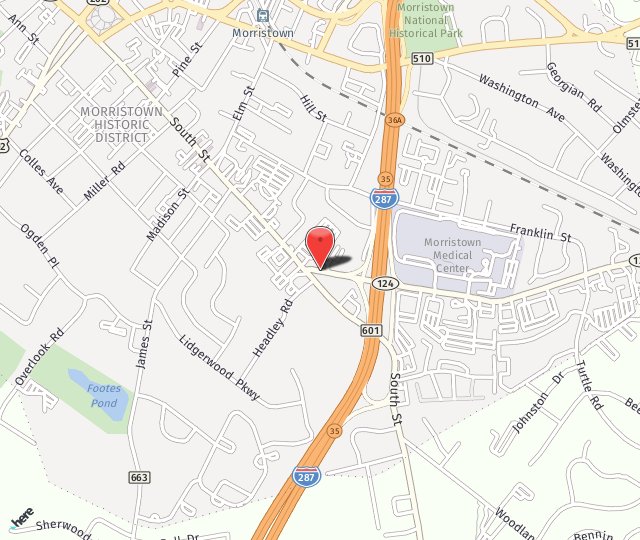Breast Reconstruction
Breast reconstruction is a surgical procedure commonly performed after a mastectomy to offer patients psychological and aesthetic benefits when recovering from breast cancer. This procedure allows many women to return fully to the life they enjoyed before being diagnosed with breast cancer, with barely any signs of the disease remaining. Although the treatment of cancer is the main focus for both patient and doctor, restoring your appearance after breast cancer can often help ensure a complete recovery of body and mind. For many women, breasts are an important symbol of femininity that helps define their self-confidence and body image.

The emotional effects of an altered appearance can be as psychologically damaging as the initial cancer diagnosis. Breast reconstruction serves to restore a woman's body to its original condition after the treatment of breast cancer. Most of the aesthetic changes caused by breast cancer treatments such as a partial or simple mastectomy can be significantly helped by breast reconstruction.
Modern surgical technology makes it possible to construct a natural-looking breast after mastectomy for cancer or other diseases. The procedure is commonly started and sometimes completed immediately at the time of mastectomy, so that the patient awakens with a new breast mound instead of no breast at all. Alternatively, reconstruction may be performed in a delayed manner, even years after mastectomy. All insurance companies in New Jersey are mandated by law to cover reconstruction following breast cancer surgery.
There are several ways to reconstruct the breast. Some use implants; other use the patient's own tissues. Your breast surgeon and plastic surgeon should work together with you in deciding which approach is best for you.
Breast reconstruction has been proven to neither increase nor decrease the possibility of cancer recurrence or other diseases.
In addition to the complications possible from any surgical procedure (bleeding, fluid collection, excessive scar tissue, or difficulties with anesthesia), there are some risks inherent in breast reconstruction, including infection around the implant, if an implant is used, and capsular contracture, when the scar (capsule) around the implant tightens, causing the breast to feel hard. Treatment for capsular contracture varies from "scoring" the scar tissue to removing or replacing the implant. Some patients may need time to come to terms emotionally with their new breasts.
Breast Reconstruction FAQs
What Is Breast Reconstruction?
Breast reconstruction is a surgical procedure commonly performed after a mastectomy to offer patients psychological and aesthetic benefits when recovering from breast cancer. This procedure allows many women to fully return to the life they enjoyed before being diagnosed with breast cancer, with barely any signs of the disease remaining. Although the treatment of cancer is the main focus for both patient and doctor, restoring your appearance after breast cancer can often help ensure a complete recovery of body and mind.
For many women, breasts are an important symbol of femininity that helps define their self-confidence and body image. The emotional effects of an altered appearance can be as psychologically damaging as the initial cancer diagnosis. Breast reconstruction serves to restore a woman's body to its original condition after the treatment of breast cancer. Most of the aesthetic changes caused by breast cancer treatments such as a partial or simple mastectomy can be significantly helped by breast reconstruction.
How Is Breast Reconstruction Performed?
There are two basic types of breast reconstruction: those that use a breast implant to replace the removed breast tissue, and those that use skin and fat from another area of the body (known as autologous tissue). With both procedures, there are several different modifications that can be made to best suit the individual patient's needs.
Implant-based breast reconstruction is performed similar to a breast augmentation, with the use of a silicone or saline-filled implant to replace breast tissue. A breast implant requires coverage with the patient's breast skin, much of which may have been removed during the mastectomy. If additional skin coverage is needed, it can be provided by using a tissue expander to stretch the remaining breast skin and muscle over a period of several weeks before being replaced by a permanent implant. Skin taken from the patient's back can also be transferred to the breast area to cover the implant.
Autologous tissue-based breast reconstruction uses a flap of the patient's own skin and fat from another part of the body, with or without the underlying muscle, which is transported to the chest to create the reconstructed breast. This flap may remain attached to its original blood supply or can be reattached to another part of the body. There are several different types of flaps that can be used during breast reconstruction depending upon the condition of the breast area after the mastectomy.
Can The Opposite Breast Be Treated During The Same Procedure?
If a mastectomy has only been performed on one breast, the ideal reconstruction procedure would only require shaping and sculpting of the affected breast. However, many women need both breasts to be modified in order to achieve symmetric breasts. Drooping (ptotic) breasts are often hard to match in appearance during breast reconstruction, so both breasts can be treated during one procedure to reduce costs and recovery time for patients.
During breast reconstruction, the opposite breast is often shaped with a breast lift to achieve symmetry. This procedure lifts the breast to reduce drooping and match the newly reconstructed breast. Scars from a breast lift are usually around and below the areola and can be easily concealed. Breast reduction may be needed for women with larger and ptotic natural breasts.
How Do Breasts Look And Feel After Breast Reconstruction?
The results of breast reconstruction vary depending on the patient's individual case and the type of procedure used. While your doctor strives to achieve the most natural-looking results for your procedure, reconstructed breasts will not have the same sensation and feel of a real breast. It is important for patients to remember this and to have realistic expectations before undergoing the reconstruction procedure.
Is Breast Reconstruction Right For Me?
Although breast reconstruction is a beneficial procedure for many women, it is not right for everybody. In order to undergo any kind of breast reconstruction surgery, women should be in good general health and able to handle the stress of a surgical procedure. Certain factors may increase your risk of complications with breast reconstruction surgery, and it may be best to postpone this procedure until risk factors are reduced.
If you are interested in learning more about breast reconstruction, and to find out if this procedure is right for you, please call us today to schedule a consultation.
Breast Reduction (Reduction Mammaplasty)
Large breasts can cause pain, improper posture, rashes, breathing problems, skeletal deformities, and low self-esteem. Breast reduction surgery is usually done to provide relief from these symptoms. Performed under general anesthesia, the two- to four-hour procedure removes fat and glandular tissue and tightens skin to produce smaller, lighter breasts that are in a healthier proportion to the rest of the body.
Breast reduction surgery is not recommended for women who intend to breast-feed, since many of the milk ducts leading to the nipples are removed.
During the breast reduction procedure an anchor-shaped incision is made from the new location of the nipple down to and around the crease beneath the breast. The surgeon removes excess glandular tissue, fat, and skin, relocates the nipple and areola, and reshapes the breast using skin from around the areola before closing the incisions with stitches. Liposuction may be needed to remove excess fat from the armpit area, and in cases when only fat needs to be removed from the breasts, liposuction alone is used for breast reduction.
For a few days after surgery the breasts are bound with an elastic bandage or a surgical bra and you may be given surgical drainage tubes for fluid removal. Stitches come out in a week and the surgical bra must be worn for about a month.
Scars fade with time but will not disappear, although they can be hidden with a bra, bathing suit or low-cut top.
Risks are rare and usually minor but may include bleeding, infection, reaction to the anesthesia, small sores around the nipples, slightly mismatched breasts or unevenly positioned nipples, and permanent loss of feeling in the nipple or breast.


